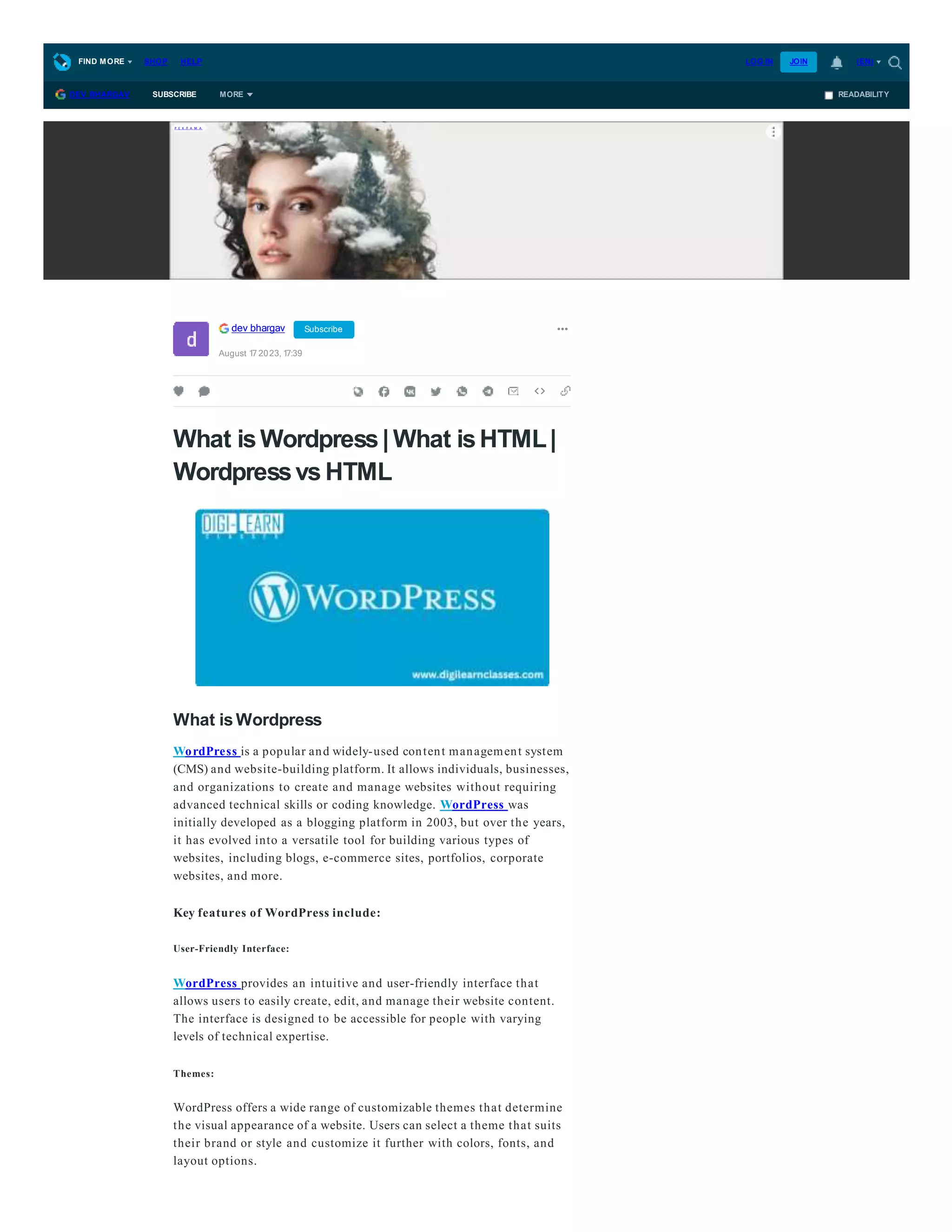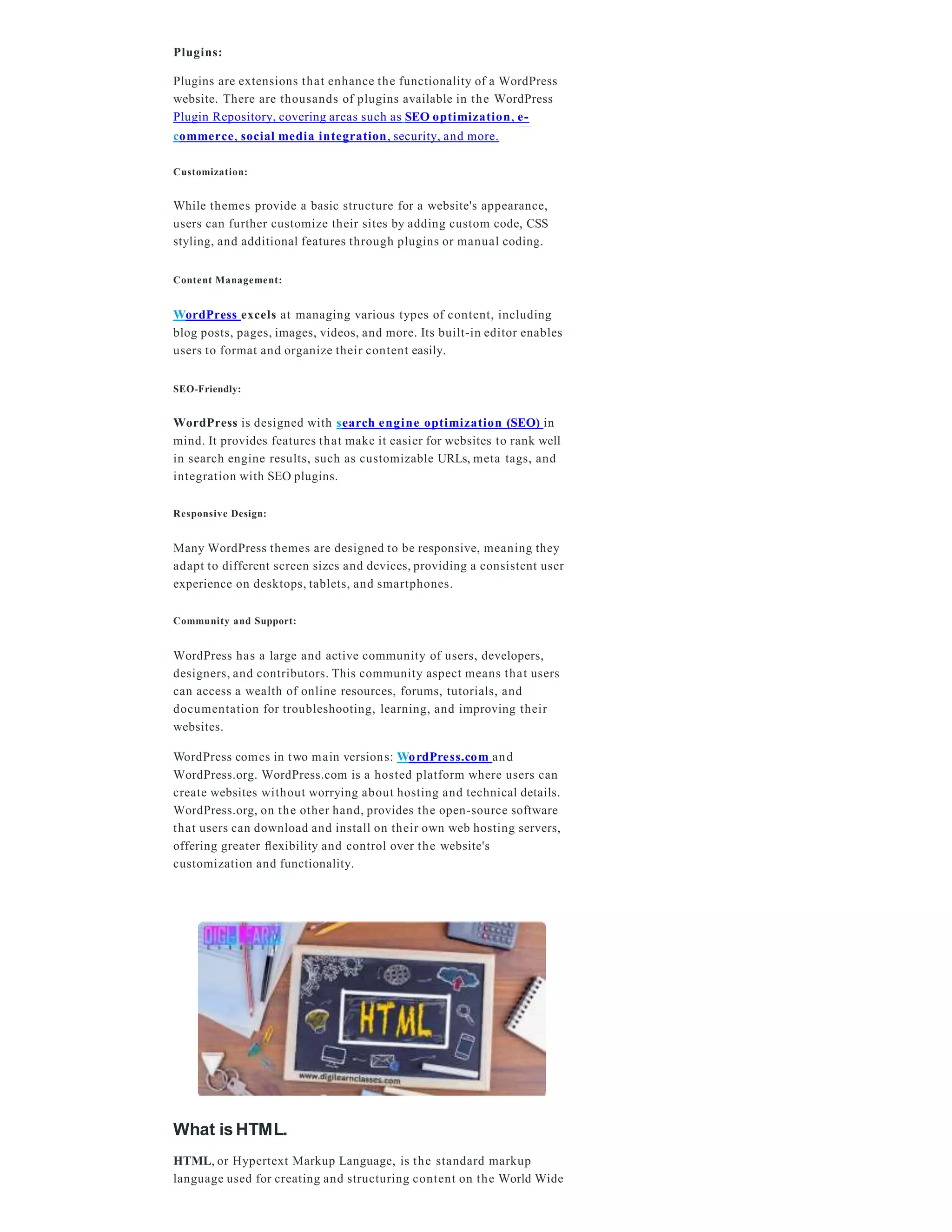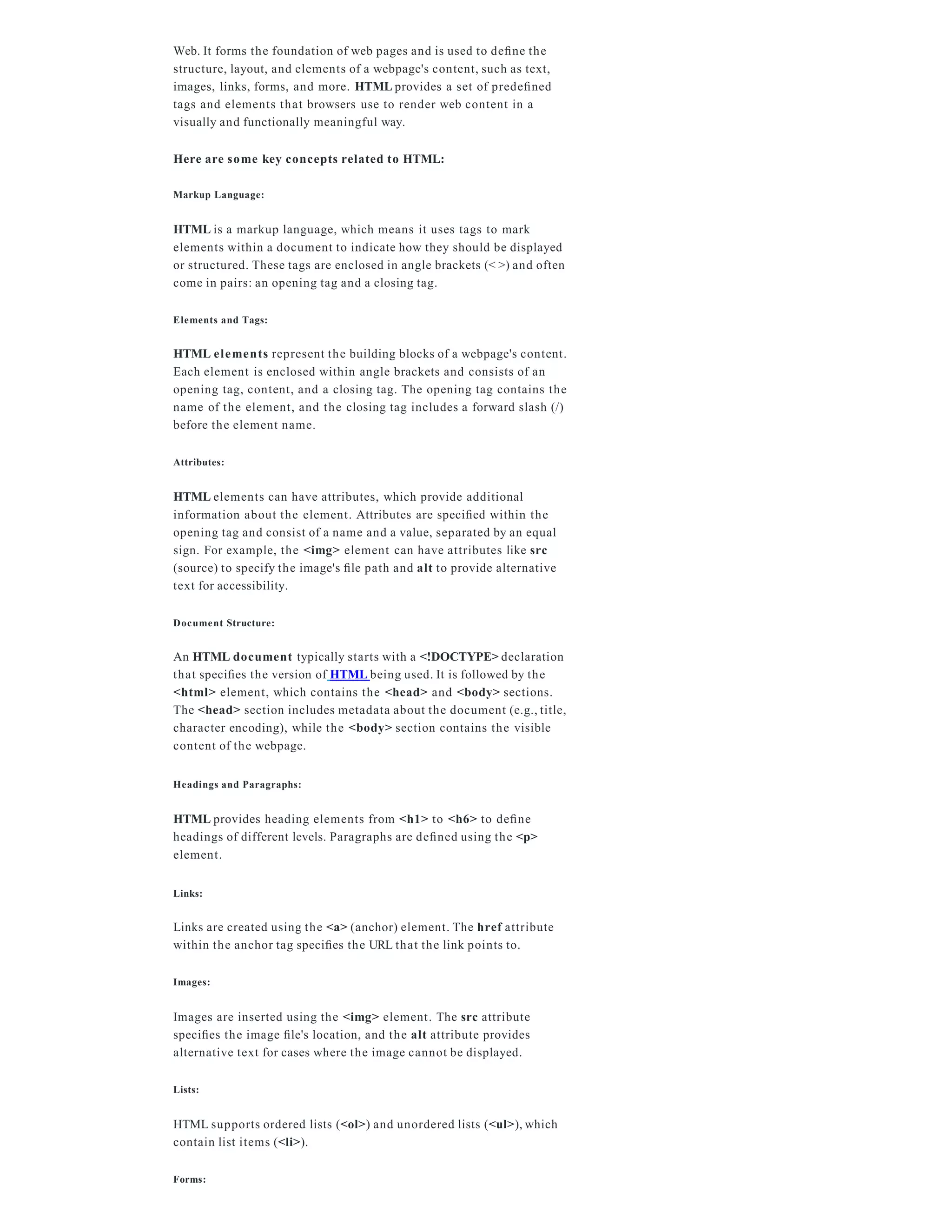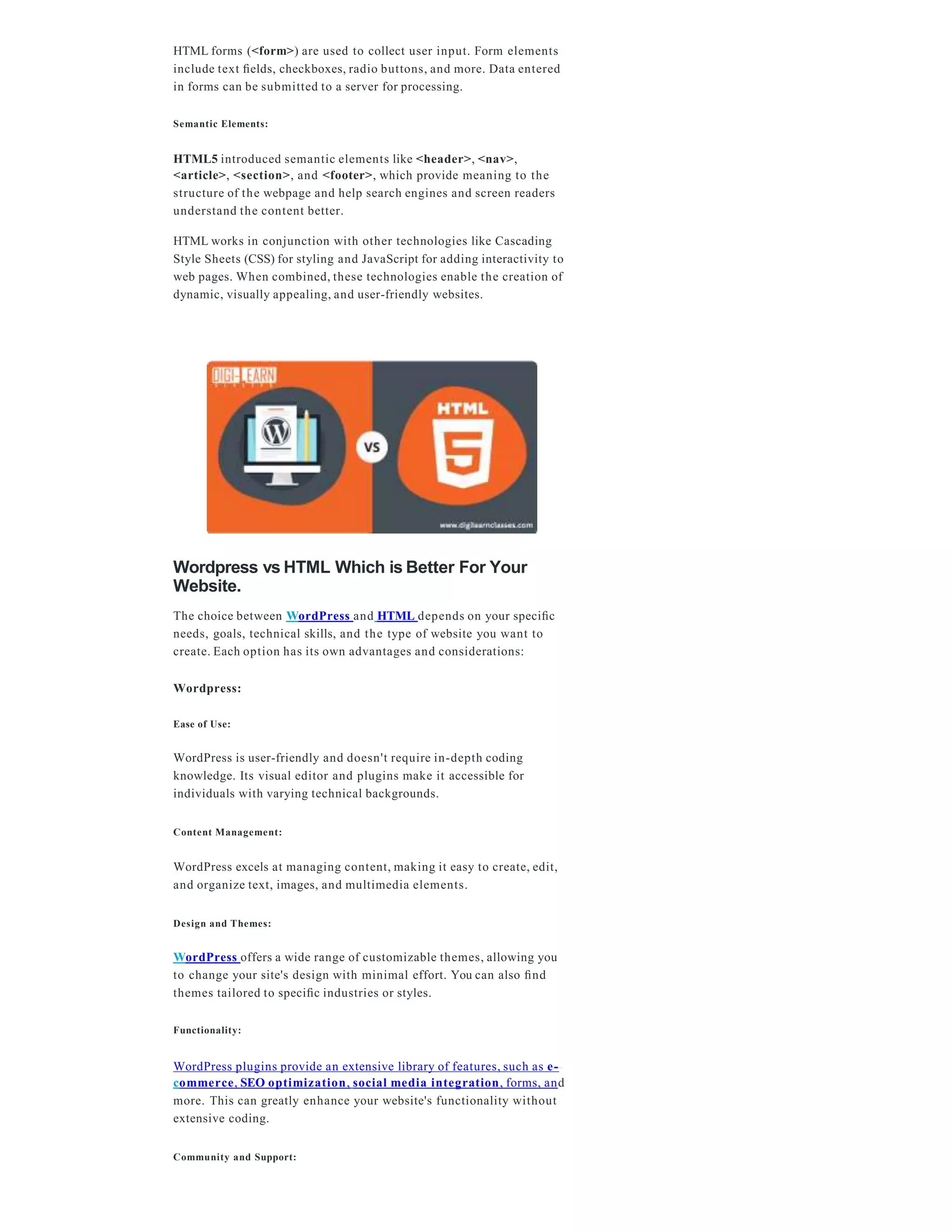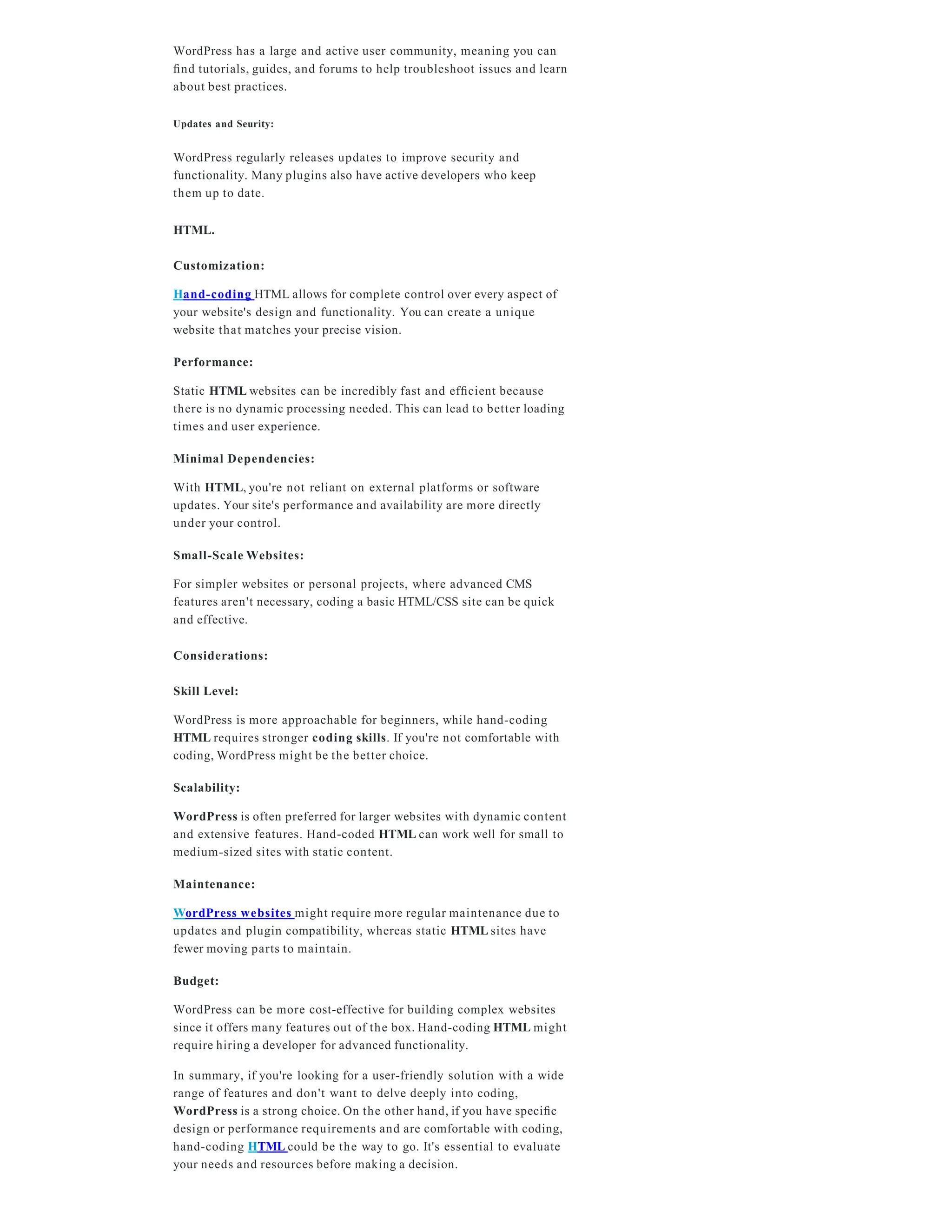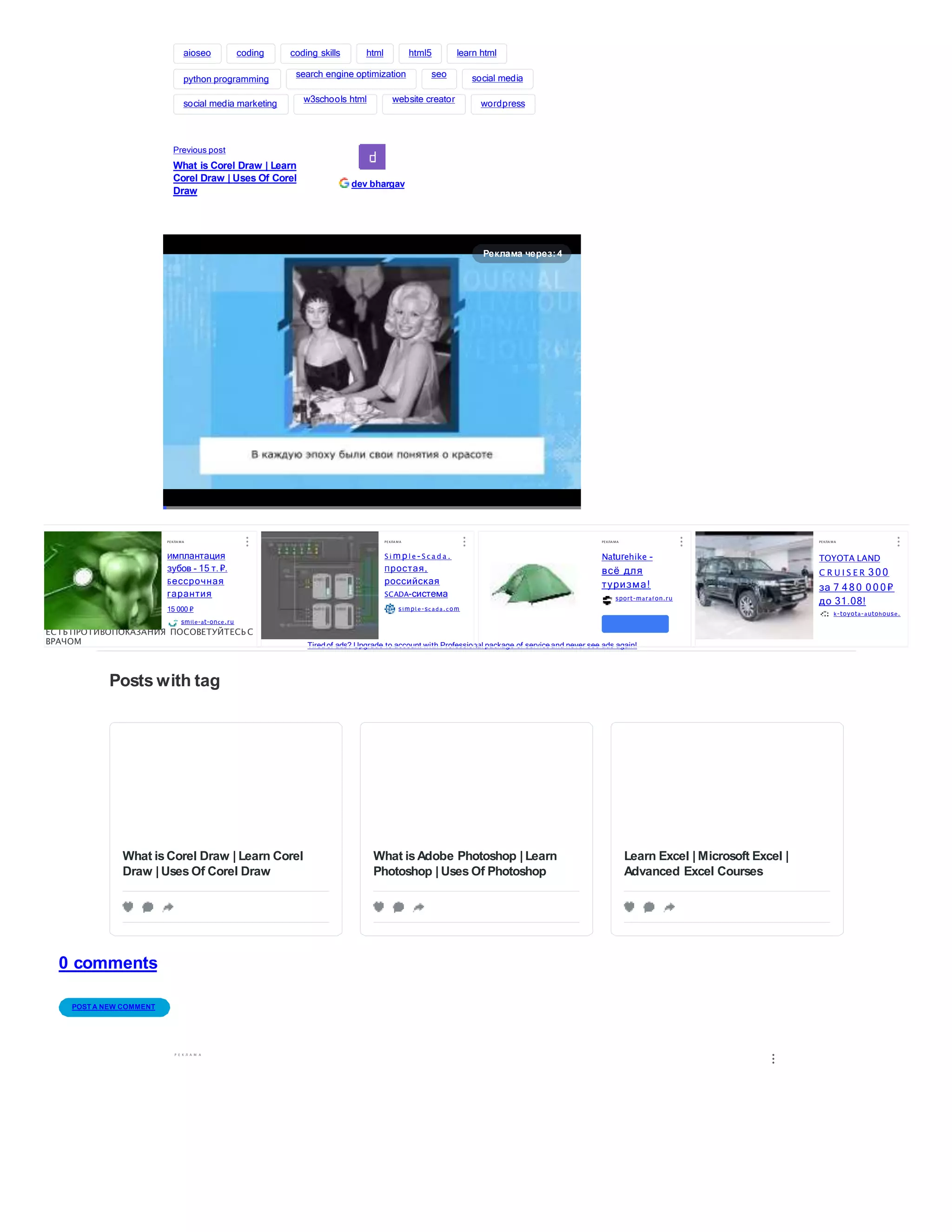WordPress is a user-friendly content management system that allows users to create and manage websites without advanced technical skills, featuring customizable themes, plugins for added functionality, and strong community support. HTML is the foundational markup language for creating web content, utilizing predefined tags for structuring elements and supporting styling through CSS and interactivity with JavaScript. The choice between WordPress and HTML depends on specific needs, with WordPress being ideal for ease of use and content management, while HTML offers greater customization and performance for those with coding skills.
